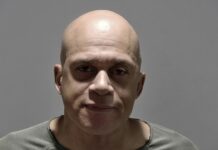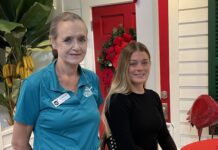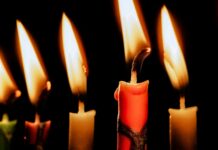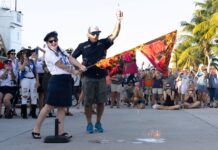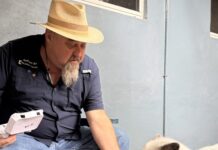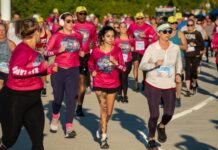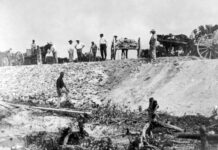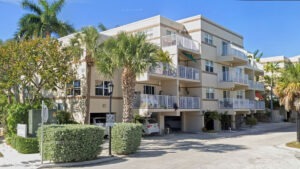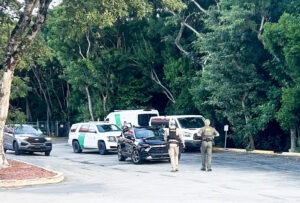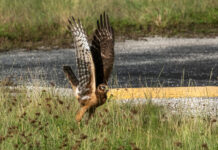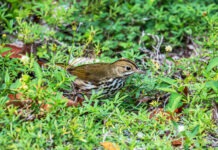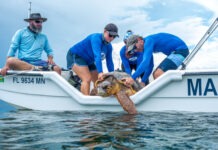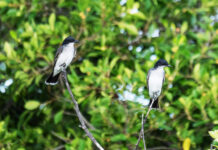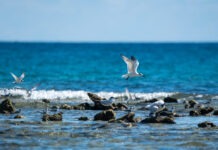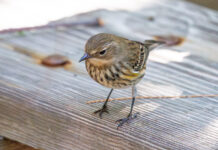It felt for a while like summer was holding out on us. Sure there was the stultifying humidity and the sense that, any time you stepped out into direct sunlight between the hours of 10 a.m. and 5 p.m., you had angered whatever god you do or do not believe in, and they were laying a quarter dose of their vengeance upon the crown of your head. But other than that, it had lacked the sturm und drang that is supposed to come with a summer in the Keys.
Where were the mile-high anvil clouds? The storms that come raging out of nowhere? The downpours that make everything look like a scene from a Caribbean-adjacent version of Blade Runner? Where were the lightning strikes so close and loud that they make you question your belief, or lack of belief, in gods that may or may not exist?
I mean, there have been clouds, rain, thunder and lightning, but it almost felt perfunctory, as if nature was just phoning it in to fulfill the minimum requirements. Though it’s possible I’ve been spending too much time indoors.
There was a faint drizzle when I picked up Ellen Westbrook and we left Key West. She was wearing a raincoat and I said something about how it might have been smart of me to bring one myself. She said that hers had metaphysical properties that tended to keep the rain away, though she did not use the phrase metaphysical properties.
The rain kept up through the Saddlebunches, then gave it a rest, though there were clouds in about 28 shades of gray. We took a quick run down Blimp Road to see if the American flamingo that had been there for almost a week was still there, but it had moved on.
Crossing the Bahia Honda Bridge, there was a dramatic mountain range of dark clouds offshore, behind the old bridge, that would have made a great photo, especially in black and white, but it seemed unwise to stop the car there. (I am haunted by photos I didn’t manage to take. Most of them seem to involve storm clouds.)
We stopped to deliver a loaf of Ellen’s coconut bread to Mariah Hryniewich and Gianna Arcuri at the Florida Keys Hawkwatch at Curry Hammock State Park, and hung out on the platform long enough to catch the last of the 10 migrating ospreys they saw that day, as well as approximately two billion barn swallows that streamed past like a feathered meteor shower.
Long Key had been something of a rarity hotbed in recent days. There was a thick-billed vireo that’s been seen almost daily on the Golden Orb Weaver Trail for the last month or so. And then there was the burrowing owl that Mary Stella had seen there and posted great pictures of that morning.
In the parking lot we listened to a couple recordings of thick-billed vireo calls and burrowing owl calls so we knew what we were hoping to hear. And then I tried to spray myself down with Off! but the can was empty.
We walked slowly down the trail, stopping, listening, trying to ignore the thunder that was getting louder and the sky that was getting darker. We went as far we could without having to slosh through some muddy water, then headed back, having only seen a couple cardinals.
Occasionally you have to content yourself with the whole the-journey-is-the-destination thing. Or at least that’s what I was telling myself.
On the Long Key Bridge the rain came fast and sharp. If there was a car ahead of me I couldn’t see it. I focused on staying on my side of the yellow line and hoped anyone coming the other way would do the same.
The rain let up after Hawk’s Cay, but there was a bank of very foreboding clouds down the road throwing lightning bolts around, including a volley that threw three or four bolts on each side of the highway. But we figured we had a little time to check out the salt pond on Tropical Avenue before the full on ugliness hit. Ellen pointed out that, sitting in a car with four rubber tires, we were pretty well insulated.
The lone bird in the pond was a tricolored heron, skinny, vulnerable, gimcrack-looking compared to all that oncoming weather. It was fishing, wading through the water, stabbing at the occasional fish, a small wake spreading out behind it. Lighting cracked, thunder rumbled, but it did not seem affected. It just kept fast-stepping through the water, looking for more fish.
I think my favorite opening line of any piece of literature comes from Annie Dillard. It’s a matter-of-fact, simple nine-word throwdown in two sentences, the first lines of a slim volume of essays called “Teaching a Stone to Talk.”
“A weasel is wild. Who knows what he thinks?”
She goes on to write a tour de force natural history essay about the relentless and admirable tenacity of weasels that I recommend to anyone who … which I recommend to anyone alive.
I’ve tried to consider wildlife with the who-knows-what-it-thinks template ever since.
But I was straining not to question the heron’s motives in this particular situation. Because surely, hardwired somewhere in that bird’s brain, was generational knowledge, if not personal knowledge, that being the highest point in a low landscape like a pond was probably not the best way to survive a lightning storm.
Ambition got the better of me and I got out of the car to try and take a picture of the tricolor. But raising the camera spooked it, and it flew off to the far end of the pond, though still out in the open.
But it turned out the tricolored heron wasn’t the only bird. There was a greater yellowlegs working the more sensible edge of the pond, and a pair of willets following each other around through the shallows. One of them obliged me and allowed me to paparazzi it through the bushes.
I don’t know what any of them were thinking. But Ellen and I got back in the car and headed home just as the weather got more intense.
